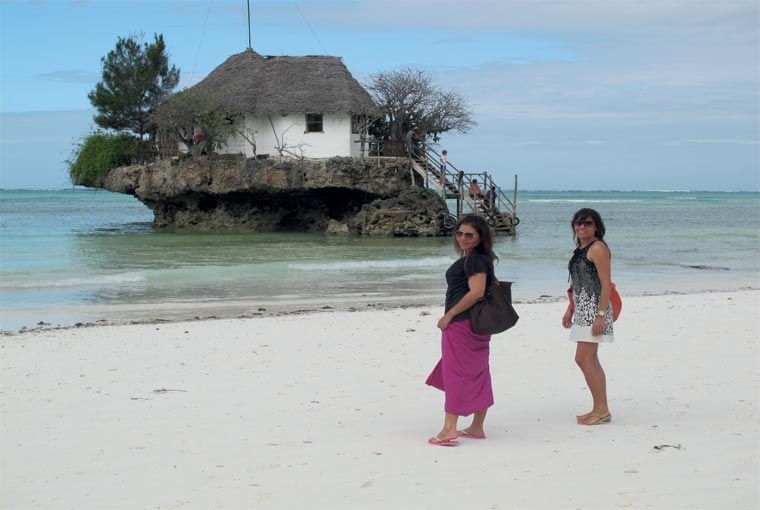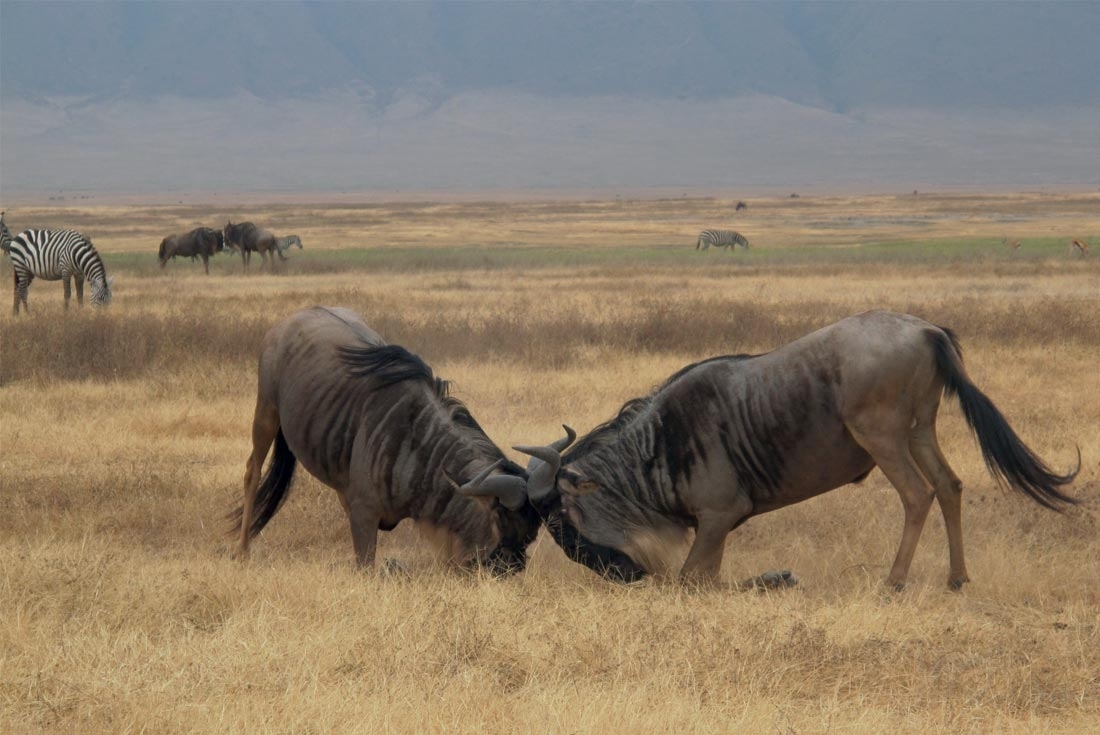

Nothing that I can write in this travelogue will do Africa justice, except perhaps that it will, quite literally, take your breath away. I’ve always dreamed about going on safari in Africa, and after watching a gazillion NatGeo documentaries on the Serengeti, one would imagine that I would have gotten a good idea of what to expect. Nothing could be further from the truth.
I decided to visit Tanzania, as opposed to Kenya, partly because a dear friend of mine lives in Dar es Salaam and I wanted to spend some time with her. Perhaps the fact that Zanzibar is also in Tanzania added to the charm, as I tend to gravitate to the ocean whenever I can. After speaking to people who had already visited Tanzania, I decided to do the tried and tested route – Lake Manyara, the Serengeti and the Ngorongoro crater, after which I would go to Zanzibar and Dar es Salaam.
African safaris are surprisingly and unnecessarily expensive, especially since the levels of service in even the fanciest hotels are poor, to say the least. In fact, they make you appreciate the excellent standards of the Indian hospitality industry. However, there are cheaper options available in the form of tented campsites (read basic tent, no hot water and no electricity), but after having watched The Ghost and the Darkness several times whilst I was still an impressionable youth, I decided against it.
The first leg of our trip involved flying to Arusha, ‘The Geneva of Africa’, or at least that’s what it said at the airport. I’m not sure why our travel agent flew us to Arusha in the first place, since it’s possible to fly straight into the Serengeti. Yup, there’s an air strip (several air strips, actually) smack bang in the middle of the park. Our drive began the next morning to Lake Manyara, on the bumpiest roads imaginable. Suffice to say, it was an unpleasant journey, but the anticipation of the safari made everything bearable. I have to admit, Lake Manyara was a bit of a damp squib! It’s supposed to be famous for tree climbing lions (which would definitely have made the trip worthwhile), but all we saw were baboons (by the hundreds) and zebras on the horizon! The Lake Manyara Wildlife Lodge, however, is definitely worth a visit, especially if you are driving to the Serengeti and want to stop for the night! Perched atop a cliff, overlooking the spectacular rift valley and the lake shimmering pinkly in the haze, the lodge is breathtakingly beautiful.
We left the lodge at the crack of dawn the next morning, albeit reluctantly, and made our way to the Serengeti! We drove past the rim of the Ngorongoro Crater (and peered into it longingly), and through the jaw dropping, Jurassic-esque landscapes where the earth gradually changed from red to white. I would strongly recommend this leg of the drive simply for the vistas that it offers. Roughly five hours later, sore bottomed, we pulled into the Serengeti (after waiting interminably for our passes at the gate). My first impression of the ‘endless plains’ was, ‘Seriously? This is what I came all the way to Africa for?’, because what seemed to be an endless stretch before us, was a dusty, arid landscape without so much as a single tree or shrub in sight! I was soon distracted by a sighting of a lioness hunting in the savanna – not even five minutes after we entered the park! However, she was too far way for us to get a good view, so we tore ourselves away and decided to seek, literally, greener pastures. Gradually, the landscape changed and the horizon was dotted with flat-topped acacias (which you will recognize from The Lion King) and kopjes (rocky outcrops)! It’s almost as if the Serengeti comes to life the deeper you venture into it. We passed the green stretches too, around little swamps and rivers (perhaps the word ‘river’ is too generous for the little rivulet), but it was mesmerizing to see the bandwidth of colours and textures that make up the grassland!
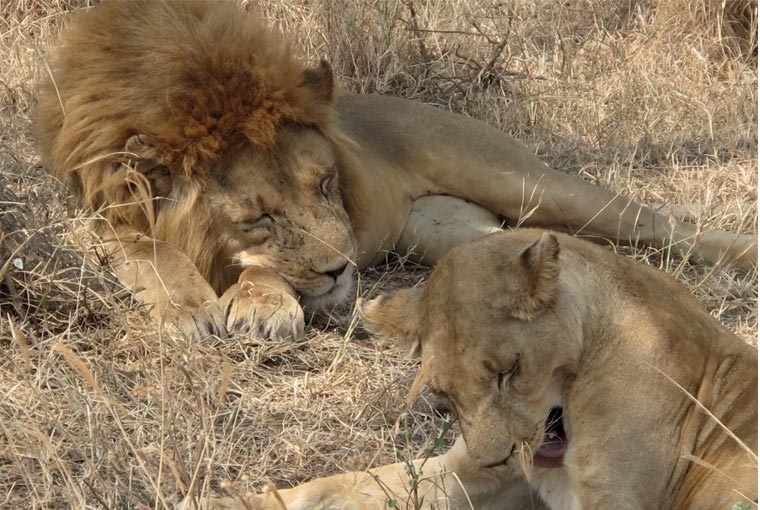
After the initial sighting of the lioness, we saw a lone hyena, a herd of elephants and a few Thompson’s gazelle. I began to think that my whole ‘African safari fantasy’ had been overplayed in my head and this was all I was going to get. However, the Seronera Wildlife Lodge made up for our disappointment. Built on an elevation, the lodge is artfully placed using wood and glass, quite literally on and around a kopje! Gigantic boulders form part of the interiors of the lodge and comically jut out of the roof as well. The view from the deck is absolutely beautiful! The plains of the Serengeti stretch endlessly before you, while the horizon is dotted with the silhouettes of elephants and giraffes as they amble by. The view is all the more spectacular at sunset, when the sky turns a fiery pink. I was seized by the sudden urge to apply for a job as a scullery maid at the lodge so I could watch the sunset every day. The interesting part about the lodge is that it blends in almost seamlessly with the park, without so much as any intrusive fences or walls. Little hyraxes (small herbivorous mammal, often mistaken for a rodent but actually the closest living thing to an elephant) scamper around with their young, and my cousin found her path up the stairs rudely blocked by a pair of warthogs who happened to be admiring the sunset as well. We were warned to keep our windows locked because of the kleptomaniac tendencies of the resident baboons, who aren’t averse to stealing your underwear or your reading glasses. If you’re very lucky, you might see a lion right outside your window, or a hippo trundle by!
Our game drive began the next morning at 5 am, before the rest of the humans descended on the Serengeti. It seemed as if everyone had the same bright idea, because very soon there was a veritable traffic jam of Land Cruisers in the park. Maybe I exaggerate (as I’m prone to doing) but usually, the best way to spot a wild animal park is to look for a huddle of Land Cruisers. Sure enough, as soon as we spotted a huddle, we wormed our way in. The drivers in the Serengeti have amazing etiquette – no blocking another car’s view, no littering, no overtaking etc. We were rewarded by a speck in the distance, which we were informed was a leopard who was guarding her kill with two of her cubs. It was now 10 am and the sun was beating down fiercely, so I don’t really blame the leopard for hiding in the shade. Besides, if I saw 27 Land Cruisers full of gawking tourists, I wouldn’t make an appearance either. So after tantalizing glimpses of her hind leg and then her ear, we decided to set off to look for another huddle. By now, we had spotted umpteen elephants who seemed completely unconcerned about the proximity of the Land Cruisers, even when accompanied by their young. I don’t know what it is about elephants, but I for one, never get tired of looking at them. Did I mention the giraffes? There were gazillions of them, to the point where we didn’t even pause for a look as we drove past them. Then, there were the heart-wrenchingly cute dik-diks (a species of miniscule antelope who mate for life and thus are usually spotted in pairs) and the elusive pumba (or the wart hog, but the lingo from The Lion King seems to have taken Africa by storm) who sticks its tail up when alarmed and breaks into a comical trot. We got yet another glimpse of a pride of lions deep in a thicket, so all we saw were a tail or two and perhaps a flash of its mane. Despondent, the familiar whine now playing in my head (is this what I came all the way to Africa for?), we were making our way back to the lodge, when we turned a corner and under the shade of a tree, six feet away from us were a lion and lioness. My breath was quite literally caught in my throat, because it seemed like this is what I had been waiting for my entire trip. There they were, barely a few feet away from me. The pair’s indifference to our presence (we were the first to spot them, but soon other cars pulled up too and there was a whirring and a clicking as the cameras snapped endlessly) was slightly disturbing to me because it was an indicator of how inured they have become to our intrusive presence. We watched them for what seemed like hours (probably only 15 minutes though), while they napped and then the lion walked over to the lioness and they began to mate. By the time I whipped out my camera the happy event was over, but about six minutes later, he was ready for another round. As thrilled as I was to have witnessed it, I couldn’t help feeling a stab of embarrassment at being part of stripping these animals of any sense of privacy! Satisfied, (the lion and I, both), we made our way back to the lodge to indulge in one last sunset before we made our way to Ngorongoro.
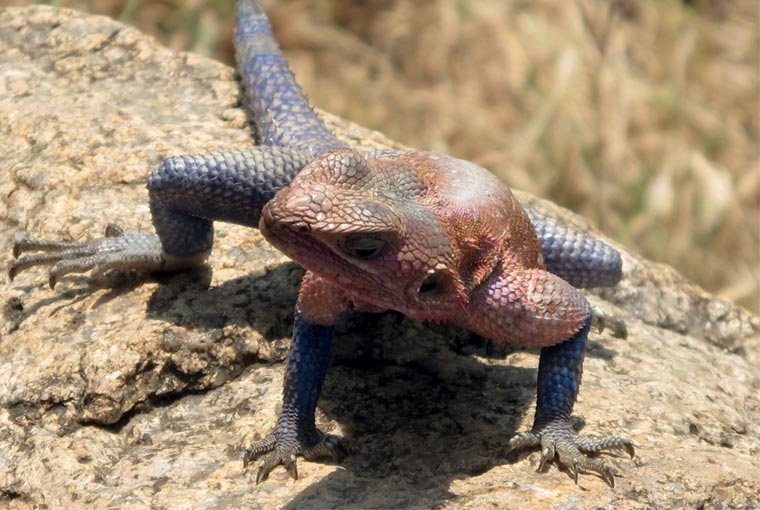
The next morning, we wound our way to the crater, which was a three-hour drive away. It was far too late to make the 2000 meter descent into the crater, so we headed straight for the Ngorongoro Wildlife Lodge, which is situated strategically at the rim of the crater, with a steep drop that allows you to view the crater in its panoramic entirety. Like its sister lodges, the lodge is similarly built using wood, glass and stone and the views from almost every inch of the lodge are spectacular. When viewed from the rim, the crater seems almost unimpressive. But when you make the precarious journey down into the crater (at the crack of dawn again), you find yourself in a magical realm, where nature abounds in all her glory and it almost seems impossible for you to ever be happy in a city or town again.
The crater, which was formed when a large volcano exploded and collapsed on itself two to three million years ago, is 610 meters deep and its floor covers 260 square kilometers, so it doesn’t take very long to explore the entire area! Approximately 25,000 large animals, mostly ungulates, live in the crater. Almost as soon as you descend into the crater, you approach Lake Magadi, which is a seasonal salt lake. The other major water source is the Ngoitokitok Spring, near the eastern crater wall. There is a picnic site here open to tourists and a huge swamp fed by the spring, and the area is inhabited by hippopotamus, elephants, lions and birds that swoop down to steal your food as you try to eat it. Many other small springs can be found around the crater's floor, giving rise to patches of startling green vegetation on an otherwise seemingly dry crater floor.
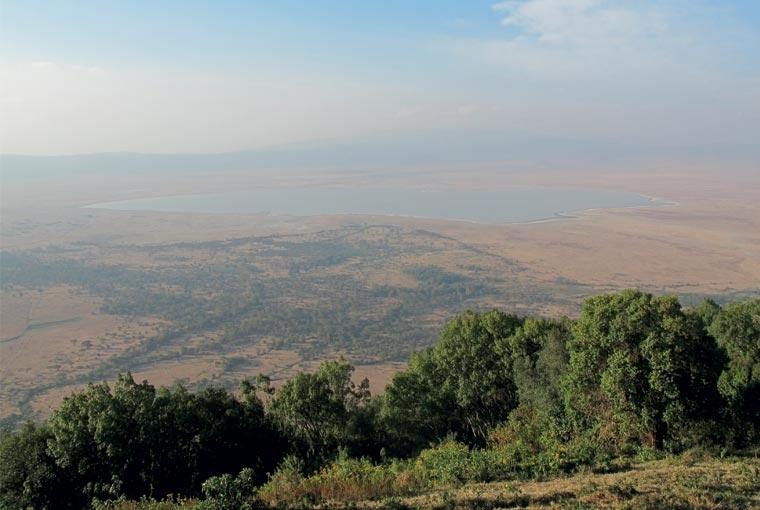
Text Pia Krishen
